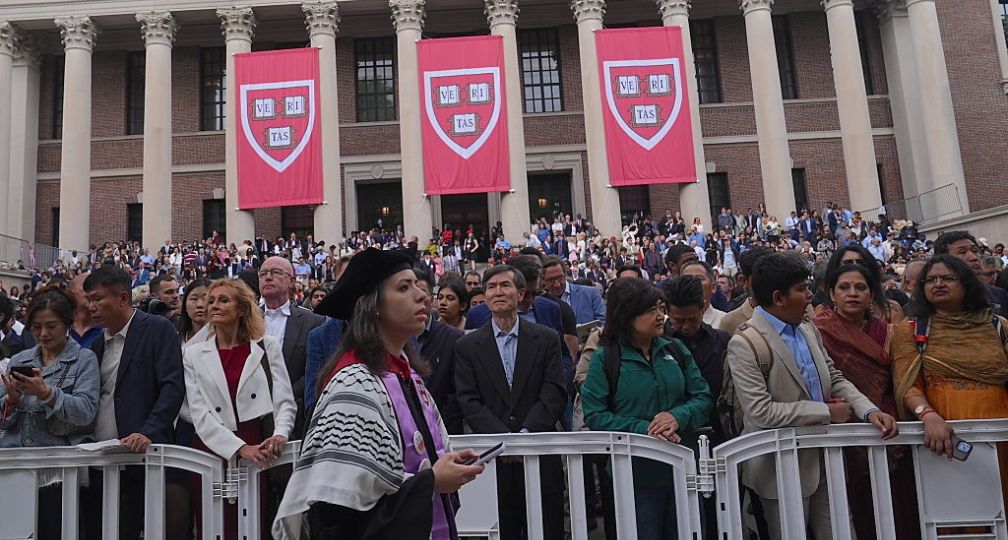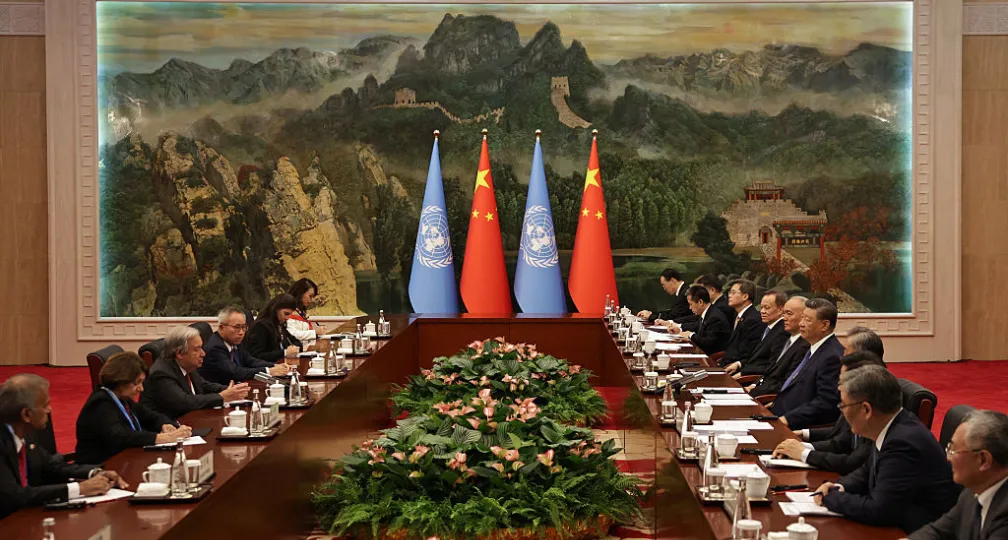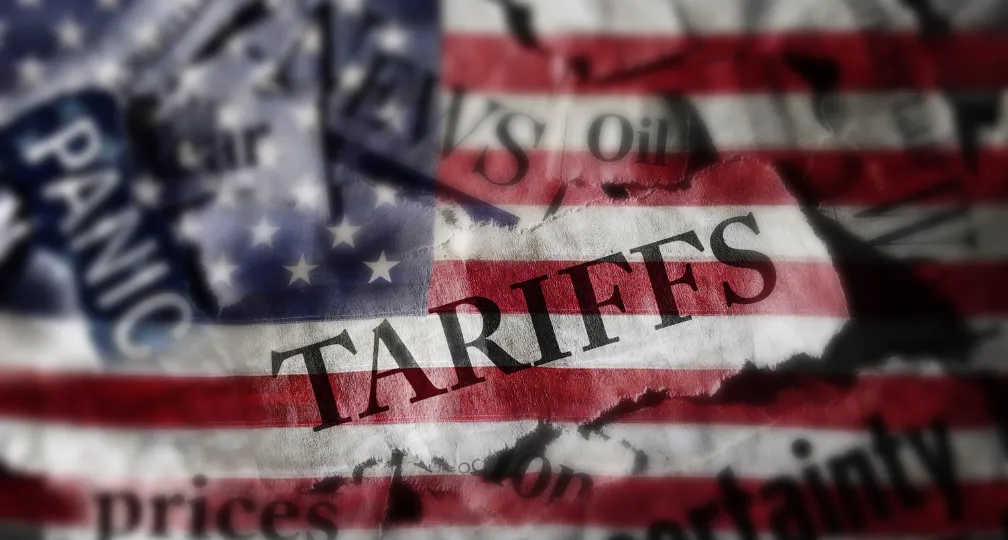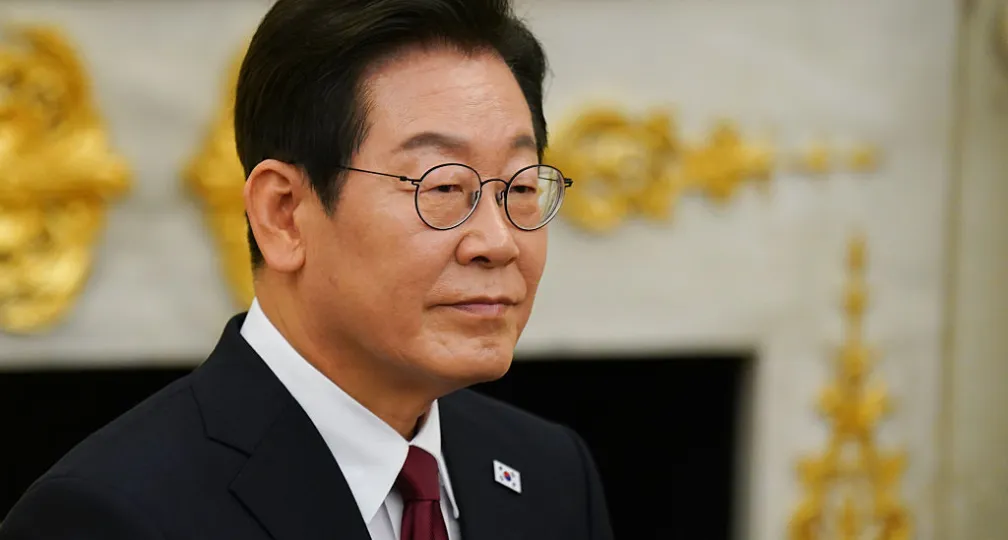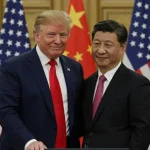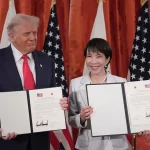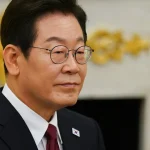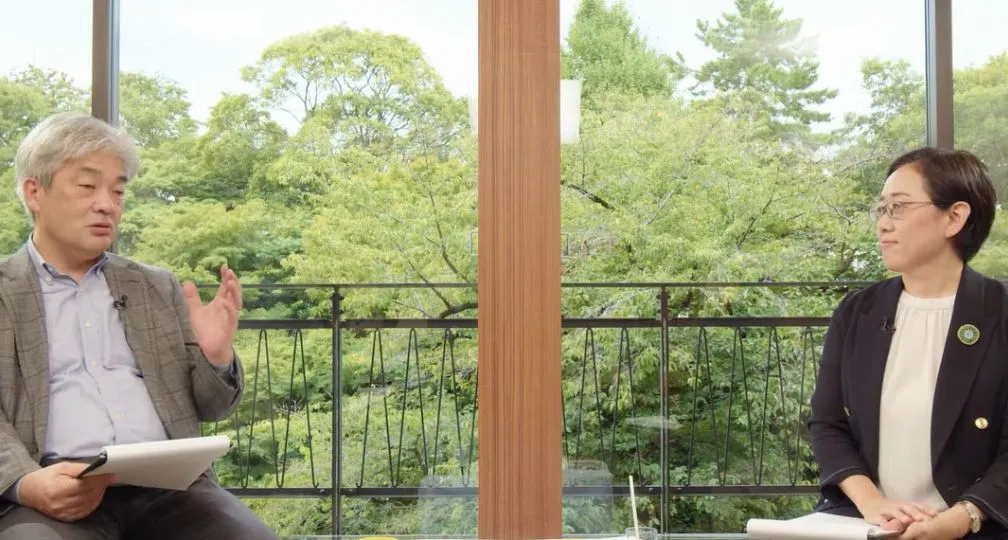What Comes Next after the Supreme Court Rules on IEEPA?
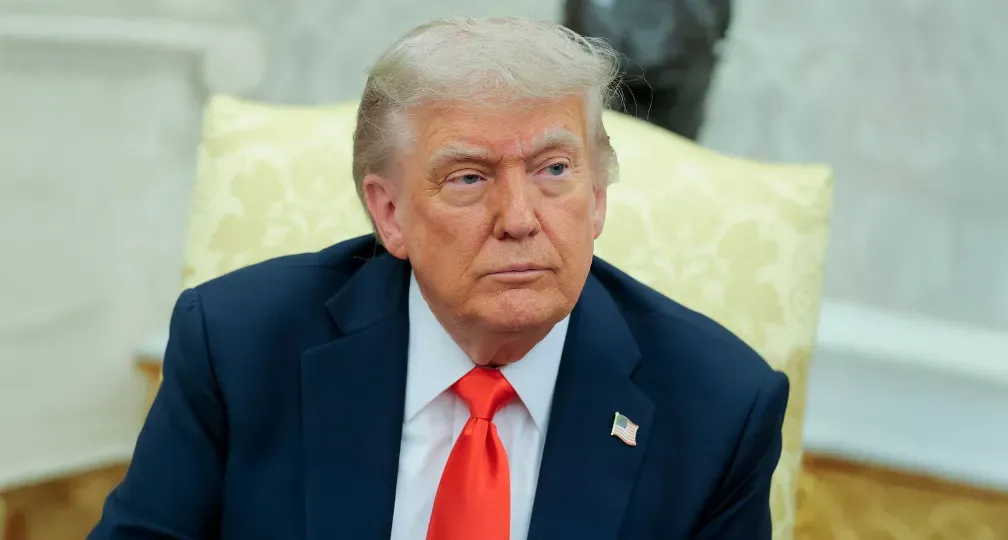
The latest regulatory developments on economic security & geoeconomics
By Paul Nadeau, Visiting Research Fellow, Institute of Geoeconomics (IOG)
U.S. Supreme Court Expedites Consideration of Trump Tariffs: The U.S. Supreme Court announced that it will hear oral arguments on the legality of the Trump administration’s tariffs imposed under the International Economic Emergency Powers Act (IEEPA) on November 5. The Court had announced earlier that it would hear the case on an accelerated schedule and setting up a crucial decision on whether Trump’s April 2 tariffs can remain in place or whether they must be revoked and the collected tariffs paid back.
Pharmaceutical Tariffs on the Way? On the Truth Social social media network on September 26, Donald Trump announced a 100 percent tariff on branded or on-patent pharmaceutical imports starting on October 1, with an exemption for imports from companies building manufacturing facilities in the United States. Trump also announced a 25 percent tariff on heavy truck imports. The agreements that the European Union and Japan reached with the United States included a 15 percent cap on pharmaceutical tariffs which should mean that both will be exempted from the 100 percent tariffs (the truck tariffs will not be exempted from the negotiated caps).
Trump Responds to the National Security Threat from Lumber: On September 30, the White House announced 50 percent tariff on kitchen cabinets, bathroom vanities, and associated products, both also starting on October 1. The tariffs follow a lobbying effort by representatives of the American cabinet industry which argued that the industry is suffering from unfair foreign trade practices.
Commerce Department Opens Section 232 Investigations into Robots & Medical Equipment: The U.S. Department of Commerce announced on September 24 that it had begun Section 232 investigations into robotics & industrial machinery and into medical equipment. While investigations under Section 232 can take up to 270 to complete, the Trump administration signaled that it intends to move faster.
Trump Exercises Golden Share: Donald Trump exercised the U.S.’s “golden share” to block U.S. Steel from shutting down a plant in Granite City, Illinois. U.S. Steel had notified the plant’s workers that the facility would close in November and Nippon Steel, U.S. Steel’s parent company, said that it would continue to pay the plant’s employees despite the closure, but according to the Wall Street Journal, U.S. Secretary of Commerce contacted U.S. Steel CEO David Burritt to tell him that the Trump administration would not allow operations to cease and would invoke its “golden share” privileges to that end.
Deal Reached on TikTok: On September 25, Donald Trump issued an executive order that allows a consortium of U.S. investors to manage TikTok in the United States, arguing that it meets the “qualified divestiture” standards required by Congress to demonstrate that it is no longer controlled by a foreign adversary. ByteDance, TikTok’s parent company, will retain less than 20 percent of the new entity which will be subject to rules governing the use of users’ data in the United States.
Semiconductor Firms Placed on BIS Entity List: The U.S. Department of Commerce’s Bureau of Industry & Security (BIS) placed GMC Semiconductor Technology (Wuxi) and Jicun Semiconductor Technology on the Entity List for acquiring U.S. semiconductor manufacturing equipment for Semiconductor Manufacturing International Corporation (SMIC), China’s largest chipmaker. The Commerce Department’s Entity List designates companies subject to U.S. license requirements for the export or transfer of specified items that may be sensitive for national security or U.S. foreign policy interests.
Sanctions on Iran “Snap Back” in Place: UN sanctions imposed between 2006 and 2010 on Iran for its nuclear activities that were suspended under the 2015 Joint Comprehensive Plan of Action (JCPOA) were reimposed by France, Germany, and the United Kingdom on September 28. While the sanctions were scheduled to end permanently on October 18 under the terms of the JCPOA, the three countries chose to reimpose the sanctions, arguing that Iran had not fulfilled its commitments under the agreement. The United States had withdrawn from the agreement in 2017 during the first Trump administration, while China and Russia are not bound by the decision and are expected to maintain the suspension of sanctions.
Analysis: What Comes Next after the Supreme Court Rules on IEEPA?
The Supreme Court’s decision to schedule oral arguments in the IEEPA case in early November means clarity will come sooner rather than later for Trump’s signature tariff initiative. The stakes are of course massive for the Trump administration and for the countries whose exports have been targeted. The IEEPA tariffs serve the Trump administration’s goals extremely well and in ways no other tool could, so they won’t be easily replaced if the Trump administration loses in court. But even if the Supreme Court revokes the specific IEEPA tariffs, the Trump administration will almost certainly try to find other tools that they can cobble together, maybe combining several actions into a “Frankentariff” to get as close to what IEEPA could achieve as possible. Whatever happens, tariffs will remain a central feature, the only question is which tariffs.
The first scenario to consider is the status quo where the Court keeps the IEEPA tariffs in place, either permanently or over a period of time. In this case, the Trump administration and its negotiating partners would proceed as they have been so far, pursuing and implementing agreements with the Trump administration. With the legal wind at their back, the Trump administration may seek yet more concessions from its partners, but for all intents and purposes the status quo of baseline tariffs and bilateral negotiations would continue for the foreseeable future.
More complicated is the next set of scenarios where the Supreme Court rules against IEEPA tariffs and requires them to be withdrawn, either immediately or at some point in the near future. One possibility is that after the decision, the Trump administration tries to initiate legal proceedings arguing that the agreements reached with international partners following IEEPA tariffs are settled U.S. policy in action and can’t be overturned through a court order. Whatever the merits of that argument and depending on the specific language of the Supreme Court ruling on IEEPA, the tariffs may be kept in place while the case proceeds, drawing the issue out another few months or a year or more.
But if the tariffs are decisively revoked by the Court, then the Trump administration will need to find a way to replace the globe-spanning tariffs. There are probably three options available. The first is Section 122 of the 1974 Trade Act, which allows the president to impose tariffs of up to 15 percent on any country or group of countries with whom the United States has a “large and serious” trade deficit, along with providing for certain exemptions, such as if the product is unavailable in the United States. These may only be imposed for 150 days and any extension would require a vote by Congress.
The second is Section 301 of the 1974 Trade Act which allows the Office of the U.S. Trade Representative to impose tariffs or withdraw from agreements with countries engaging in unfair trade practices or violating trade agreements with the United States. It probably won’t be able to replace IEEPA tariffs since the lengthy investigations and staff work required make it too cumbersome to tariff the globe as Trump wants to do with IEEPA. It’s possible that Section 122 could be used to apply baseline tariffs globally and Section 301 could be used for countries that the Trump administration believes require additional coercive measures like China or Brazil, but seeking a vote in Congress to approve tariffs when the 150 day deadline nears is likely a prohibitive threshold, especially with a midterm election next year and with Trump polling terribly on tariffs and his management of the economy.
Sitting there like Chekov’s gun is Section 338 of the Tariff Act of 1930, better known as the Smoot-Hawley Act. Like Section 301, Section 338 authorizes the President to impose by proclamation “new or additional duties” in cases where evidence is found that specific countries discriminate against commerce of the United States. But unlike Section 301, Section 338 does not seem to require any agency investigation or determination to allow the president to impose tariffs, identifying only the president as the actor that determines harm from foreign trade. Tariffs under Section 338 are capped at 50 percent, but this would cover the tariff rate applied to most every country included in the April 2 tariffs, and for certain situations where the administration decides a higher rate is needed, Section 301 would be a viable alternative.
It’s an open question as to why Section 338 hasn’t been used to this point or why the Trump administration preferred IEEPA to Section 338. The America First Policy Institute, led by former Trump officials including Larry Kudlow and Robert Lighthizer, wrote in an amicus curae brief to the Court of International Trade on behalf of Trump’s case wrote that the IEEPA tariffs fits Section 338 “like a glove”. The first Trump administration considered Section 338 but shelved the possibility in favor of more recent tools, which may explain the reluctance this time.
Section 338 would also put a grenade in the future of U.S. participation in the MFN system and World Trade Organization. Section 338 predates the most favored nation (MFN) system that’s defined the post-World War II trading system under the General Agreement on Tariffs and Trade (GATT) and WTO – indeed, the MFN system was designed with the explicit intent to avoid discriminatory “beggar-thy-neighbor” tools like Section 338, which likely explains why it has remained on the shelf for so long. Yet the Trump administration is already violating the letter and the intent of its WTO obligations and Trump already threatened to quit the WTO in his first term. Even so, the Trump administration may see practical benefits to WTO membership that make Section 338 a bridge too far at this point.
A scenario which straddles the “status quo” and the possibility that the Court orders the tariff revoked would be Section 232, which allows the president to restrict imports of a particular good or set of goods to protect national security. Section 232 can’t be a like-for-like replacement for IEEPA or Trump’s broader tariff strategy because Section 232 tariffs are applied to specific economic sectors and can’t be applied on a country or a set of countries as was the goal of the April 2 tariffs. Section 232 instead represents a distinct “track” focused on sensitive goods in contrast to the tariff baseline represented by IEEPA actions. Still, and regardless of the outcome of the Court’s decision, use of Section 232 authority will remain an emphasis, covering sectors as diverse as pharmaceuticals, semiconductors, automobiles, and even apparently kitchen cabinets and bathroom vanities. In this scenario, firms, rather than countries, will become the center of gravity in upcoming negotiations, and would put companies with limited lobbying presence in Washington, DC at a massive disadvantage.
It’s an open question as to what the Court’s decision and Trump’s response would mean for American credibility. It may not be the tariffs themselves that cause uncertainty and diminished credibility, but the broader conduct of the Trump presidency that causes the most damage. So far, U.S. negotiating partners seem to have been treating the talks with considerable gravity despite the legal questions surrounding IEEPA tariffs. It’s a safe assumption that either legal clarity on IEEPA or a turn toward tariff authorities on more solid legal ground would further enhance U.S. credibility at the negotiating table. What would be (and is) more damaging to U.S. credibility would be the mixed and contradictory messaging coming from the administration on issues like investment rules, implementation of the agreements, visas, detentions of workers, and so on. Though most of these are insufficient on their own to damage U.S. credibility, the detention of Korean workers at a Hyundai plant in Georgia could cause a chill among investors if the United States cannot guarantee the safety of foreign workers, even if their documents are in order.
In the background of all of this in Congress, who could play a decisive role in the process given their constitutional authority to regulate commerce and impose tariffs. Congress could render the IEEPA tariffs void by revoking the national emergency under which the April 2 tariffs were originally imposed, revise the original legislative language of IEEPA to allow the president to impose tariffs, or pass a joint resolution of approval for Trump to follow the tariffs, all of which would likely settle the legal question without requiring the intervention of the courts. That Congress hasn’t taken any of these actions so far speaks to the difficulty of getting a vote on this issue, either because the Republican majority doesn’t want to contradict Trump and revoke the national emergency, or because no one wants to go on record voting to support tariffs with a tricky midterm election just over a year away. There’s every possibility that the Supreme Court recognizes Congress’s role, and in their decision asks Congress to sort out their disagreements with the presidency and keeping the IEEPA tariffs in place until they do, effectively delegating the Court’s decision on the issue to Congress.
This gets to why the Court’s decision on IEEPA, whatever it decides, has major implications for the separation of powers and which authorities are available to which branches of the U.S. federal government. While the immediate issue is tariffs, the gravity of the Supreme Court decision on the IEEPA tariffs has more to do with the future of executive authority and less to do with tariffs, because the Trump administration will still have tools at their disposal and will use them.
(Photo Credit: Shutterstock)
Disclaimer: The views expressed in this IOG Economic Intelligence Report do not necessarily reflect those of the API, the Institute of Geoeconomics (IOG) or any other organizations to which the author belongs.
API/IOG English Newsletter
Edited by Paul Nadeau, the newsletter will monthly keep up to date on geoeconomic agenda, IOG Intelligence report, geoeconomics briefings, IOG geoeconomic insights, new publications, events, research activities, media coverage, and more.
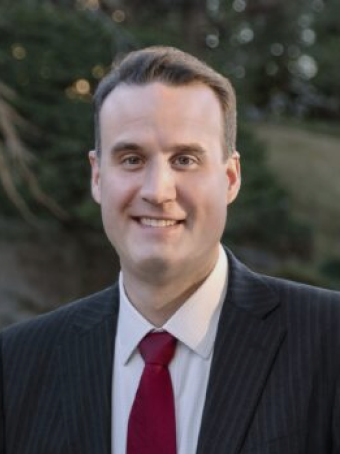

Visiting Research Fellow
Paul Nadeau is an adjunct assistant professor at Temple University's Japan campus, co-founder & editor of Tokyo Review, and an adjunct fellow with the Scholl Chair in International Business at the Center for Strategic and International Studies (CSIS). He was previously a private secretary with the Japanese Diet and as a member of the foreign affairs and trade staff of Senator Olympia Snowe. He holds a B.A. from the George Washington University, an M.A. in law and diplomacy from the Fletcher School at Tufts University, and a PhD from the University of Tokyo's Graduate School of Public Policy. His research focuses on the intersection of domestic and international politics, with specific focuses on political partisanship and international trade policy. His commentary has appeared on BBC News, New York Times, Nikkei Asian Review, Japan Times, and more.
View Profile-
 India - Japan: The Glimpse of a Shared Vision2025.12.05
India - Japan: The Glimpse of a Shared Vision2025.12.05 -
 Trump vs. Universities: Can the Innovation Ecosystem be Rebuilt?2025.12.03
Trump vs. Universities: Can the Innovation Ecosystem be Rebuilt?2025.12.03 -
 Beijing’s ‘Globalist’ Agenda Under Trump 2.02025.12.01
Beijing’s ‘Globalist’ Agenda Under Trump 2.02025.12.01 -
 Trump’s Tariffs Might Be Here to Stay – No Matter Who’s in Power2025.11.28
Trump’s Tariffs Might Be Here to Stay – No Matter Who’s in Power2025.11.28 -
 The long road to a South Korea-U.S. trade deal2025.11.26
The long road to a South Korea-U.S. trade deal2025.11.26
 Event Report: The Trump Tariffs and Their Impact on the Japanese Economy2025.11.25
Event Report: The Trump Tariffs and Their Impact on the Japanese Economy2025.11.25 The Real Significance of Trump’s Asia Trip2025.11.14
The Real Significance of Trump’s Asia Trip2025.11.14 Can Takaichi Build on a Successful Summit?2025.10.31
Can Takaichi Build on a Successful Summit?2025.10.31 The long road to a South Korea-U.S. trade deal2025.11.26
The long road to a South Korea-U.S. trade deal2025.11.26 India’s Structural Reforms: Opportunities and Risks2025.11.14
India’s Structural Reforms: Opportunities and Risks2025.11.14



